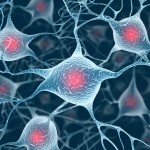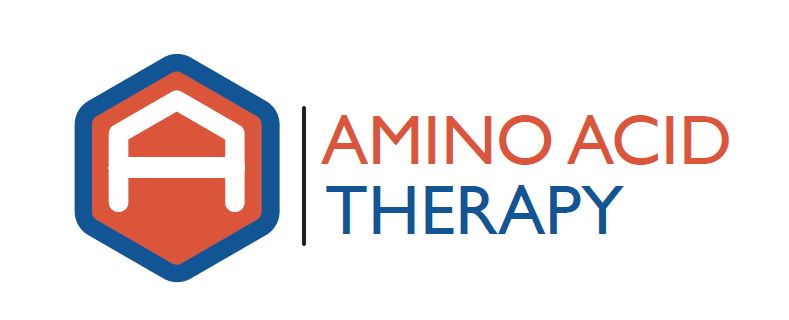by aatadmin | Sep 2, 2014 | Amino Acid Therapy, Neurotransmitters
 CysReplete is a formula that it often used in the course of amino acid therapy. It’s a very simple formula (it contains only L-cysteine, selenium and folate) with a very important purpose: to keep enough sulfur in the system and provide methyl-donors. These functions are fundamental to addressing the root causes of neurotransmitter dysfunction and to promote the proper production of neurotransmitters. (more…)
CysReplete is a formula that it often used in the course of amino acid therapy. It’s a very simple formula (it contains only L-cysteine, selenium and folate) with a very important purpose: to keep enough sulfur in the system and provide methyl-donors. These functions are fundamental to addressing the root causes of neurotransmitter dysfunction and to promote the proper production of neurotransmitters. (more…)
by aatadmin | Aug 19, 2014 | Amino Acid Therapy, Neurotransmitters
 The use of amino acid therapy in the management of disorders associated with neurotransmitter dysfunction is remarkably devoid of side effects. Occasionally, people experience nausea or GI upset from improper timing of CysReplete, from severe neurotransmitter depletion or from carbohydrate intolerance. However, there is one very group of reactions that deserves some attention – a group that is called ‘paradoxical reactions’. (more…)
The use of amino acid therapy in the management of disorders associated with neurotransmitter dysfunction is remarkably devoid of side effects. Occasionally, people experience nausea or GI upset from improper timing of CysReplete, from severe neurotransmitter depletion or from carbohydrate intolerance. However, there is one very group of reactions that deserves some attention – a group that is called ‘paradoxical reactions’. (more…)
by aatadmin | Jul 22, 2014 | Amino Acid Therapy, Neurotransmitters
 There is probably no other area that has people more confused in regards to amino acid therapy than the testing used to determine a person’s unique amino acid needs. There are many tests out there claiming to test your “neurotransmitter levels” via a urine or blood test. We have run samples with many of these labs. We have found that almost all of them are inaccurate and/or are misleading with their interpretation of the test results. (more…)
There is probably no other area that has people more confused in regards to amino acid therapy than the testing used to determine a person’s unique amino acid needs. There are many tests out there claiming to test your “neurotransmitter levels” via a urine or blood test. We have run samples with many of these labs. We have found that almost all of them are inaccurate and/or are misleading with their interpretation of the test results. (more…)
by aatadmin | Jul 8, 2014 | Amino Acid Therapy, Neurotransmitters
In Part 1 of this series, we discussed how post-synaptic neuronal damage – as opposed to low levels of neurotransmitters – is the real cause of symptoms related to neurotransmitter imbalance. Part 2 detailed how to overcome that post-synaptic damage to restore proper neurotransmitter function using specialized testing called OCT Assay Interpretation. This post outlines how OCT Assay Interpretation fits into an overall blue-print to restore proper neurotransmitter function using amino acid therapy. (more…)
by aatadmin | Jun 24, 2014 | Amino Acid Therapy, Neurotransmitters
Part 1 of this series discussed post-synaptic neuronal damage as the real cause of symptoms related to neurotransmitter imbalance. This post will detail how to overcome that post-synaptic damage to restore proper neurotransmitter function. (more…)
by aatadmin | Jun 10, 2014 | Amino Acid Therapy, Neurotransmitters
The underlying biochemistry of neurotransmitter imbalances is pretty complex. Likewise, the use of amino acid therapy to correct those imbalances is also not very straightforward. However, in this three part series I will attempt to outline a simple overview of what is happening behind the scenes and why amino acid therapy can help correct the underlying neurotransmitter imbalances that can underlie many conditions.
Behind the scenes
When most people, including most health care professionals think about symptoms associated with neurotransmitter imbalance(s) they think that levels of this or that neurotransmitter are simply too low. In this way of thinking, all that is needed is to raise the levels of neurotransmitter in the synapse; therefore, they take an SSRI, SNRI or other medication to shuffle around neurotransmitters. Some even attempt to raise the neurotransmitter levels by taking amino acid precursors such as 5-HTP or L-tyrosine. This approach may work for a few and/or for a short period of time, but the dismal long-term success of both of these approaches attests to the error in this way of thinking. The underlying cause of symptoms associated with neurotransmitter imbalance in the vast majority of cases isn’t low synaptic levels of serotonin or dopamine; it is damage to the post-synaptic neurons.
Damage to the Post-Synaptic neurons
Damage to the post-synaptic neurons can be due to many things, including neurotoxins, trauma, certain medications and drugs and genetic predisposition, amongst other things. In order to compensate for the decreased electrical flow due to this damage, neurotransmitter levels must be established that are higher than normal. In order for this to occur, serotonin and dopamine precursors must be administered in the proper balance (for each individual) or depletion/further imbalance can occur, as shown in the following illustration.

Illustration taken from Marty Hinz, MD with permission.
Part 2 of this series will explain how to overcome post-synaptic damage.
 CysReplete is a formula that it often used in the course of amino acid therapy. It’s a very simple formula (it contains only L-cysteine, selenium and folate) with a very important purpose: to keep enough sulfur in the system and provide methyl-donors. These functions are fundamental to addressing the root causes of neurotransmitter dysfunction and to promote the proper production of neurotransmitters. (more…)
CysReplete is a formula that it often used in the course of amino acid therapy. It’s a very simple formula (it contains only L-cysteine, selenium and folate) with a very important purpose: to keep enough sulfur in the system and provide methyl-donors. These functions are fundamental to addressing the root causes of neurotransmitter dysfunction and to promote the proper production of neurotransmitters. (more…)

 There is probably no other area that has people more confused in regards to amino acid therapy than the testing used to determine a person’s unique amino acid needs. There are many tests out there claiming to test your “neurotransmitter levels” via a urine or blood test. We have run samples with many of these labs. We have found that almost all of them are inaccurate and/or are misleading with their interpretation of the test results.
There is probably no other area that has people more confused in regards to amino acid therapy than the testing used to determine a person’s unique amino acid needs. There are many tests out there claiming to test your “neurotransmitter levels” via a urine or blood test. We have run samples with many of these labs. We have found that almost all of them are inaccurate and/or are misleading with their interpretation of the test results. 
